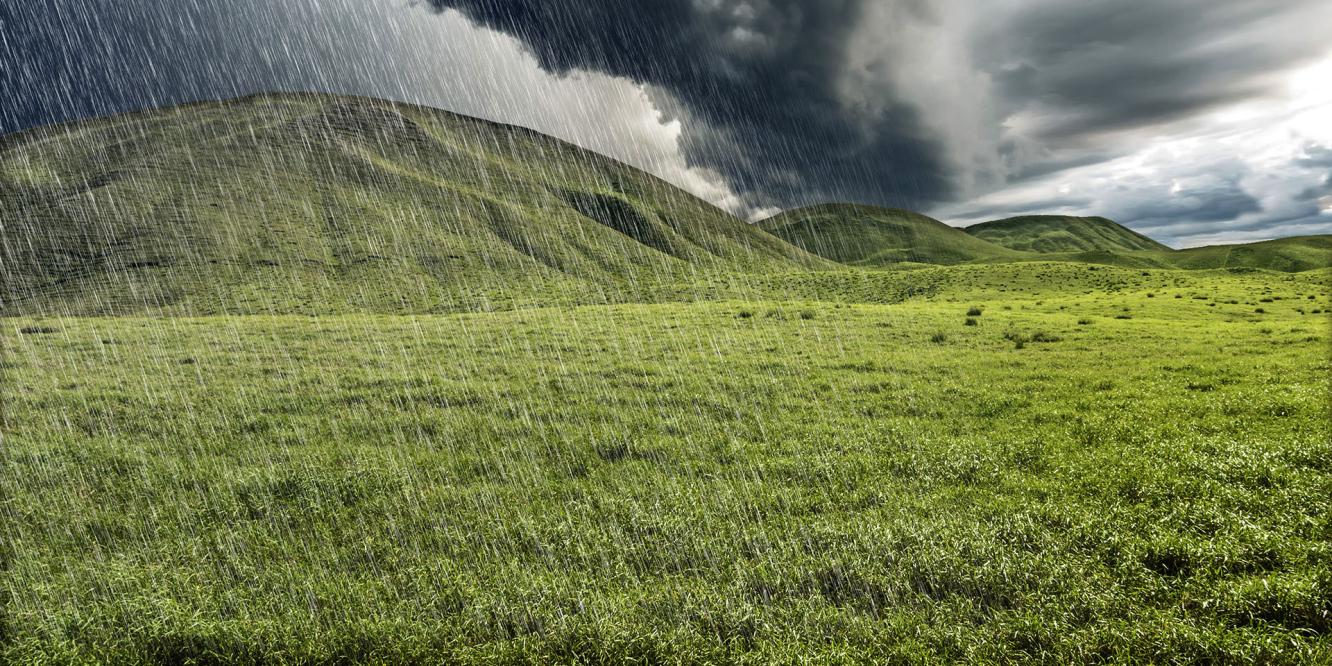Environmental Transformations and Interactions
How Susceptible is Soil Carbon?
Study looks at the importance of microbes and minerals in locking carbon into soils.

Researchers delved deep into samples from Hawai’i’s Kohala Mountain to determine which factors help keep carbon in soils. (Illustration by Nathan Johnson | Pacific Northwest National Laboratory)
The Science
All soils contain some carbon, which can help prevent erosion, retain moisture and nutrients, and support diverse soil lifeforms. Yet some soils cling to carbon more efficiently than others. Why? Could it be the type or amount of minerals in the soil, which bind with carbon? The activity of tiny microbes, which can release carbon dioxide to the atmosphere? A cross-university team of scientists studied soils from opposite ends of a rainfall gradient from the Kohala Mountain area of Hawai’i to probe the importance of these factors in keeping carbon in place. Their work suggests that interactions between microbes and minerals play a large part in protecting carbon in soils.
The Impact
Farmers aren’t the only ones interested in keeping carbon in the soil, where it can increase crop yields. Storing carbon in soil may be one way to help mitigate climate change. Carbon released from soils as carbon dioxide contributes to global warming. Carbon bound to minerals can serve as a storage mechanism, locking carbon away. Understanding the factors that govern changes in soil carbon, then, becomes a fundamental challenge for farmers and scientists alike.
Summary
Scientists chose soil that had undergone contrasting amounts of precipitation—low rainfall and high rainfall—then added carbon and organic matter to the soil and put it through dry-wet cycles to stimulate the microbes and see how much carbon could be re-released. Using nanoscale secondary ion mass spectrometry, a technique that can peer down to the elemental level of samples, they measured changes in the carbon over months of incubation. Additional work involved Mössbauer spectroscopy, which can provide detailed information about changes in iron mineralogy and is sensitive to the fate and transport of carbon in soils. This latter work was conducted at EMSL, the Environmental Molecular Sciences Laboratory, a Department of Energy (DOE) Office of Science User Facility. The scientists had expected that carbon would be influenced by iron content, the initial amount of carbon, the solubility of the soil, and the activity of microbes. However the interplay of microbial activity and the underlying mineralogy proved to be the key factor in keeping carbon close. This understanding can help guide agriculture and the development of carbon storage facilities.
Contacts
Roland Wilhelm
Purdue University
rcwilhelm@purdue.edu
Malak Tfaily
University of Arizona
tfaily@arizona.edu
Ravi Kukkadapu
Environmental Molecular Sciences Laboratory
Ravi.Kukkadapu@pnnl.gov
Funding
This work was supported by the DOE Biological and Environmental Research program, Genomic Science program. Additional support was provided by the Technical University of Munich – Institute for Advanced Study, funded by the German Excellence Initiative. The German Research Foundation provided financial support for the NanoSIMS instrument. Scientists conducted Mössbauer spectroscopy at EMSL, the Environmental Molecular Sciences Laboratory, a DOE Office of Science User Facility.
Publications
R.C. Wilhelm, et al., “Susceptibility of new soil organic carbon to mineralization during dry-wet cycling in soils from contrasting ends of a precipitation gradient.” Soil Biology and Biochemistry 169, 108681 (2022). [DOI: 10.1016/j.soilbio.2022.108681]

